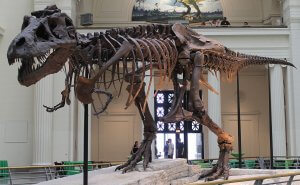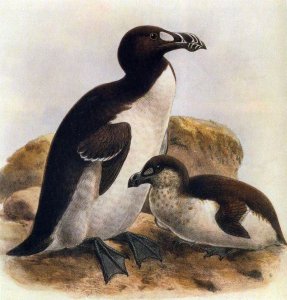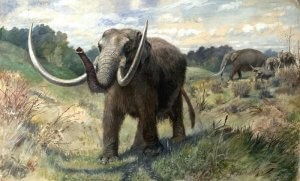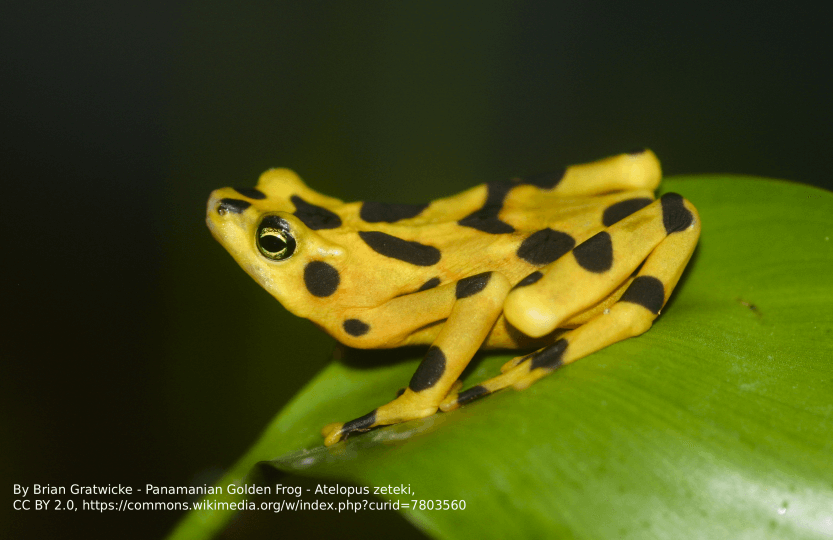Have you ever heard of the Panamanian golden frog? Or the white-plumed antbird? Probably you’ll never hear about them because they are on the edge of extinction. Fragmentation, the excessive use of land and climate change are just a few of the factors that are causing a major extinction event. Right now. Right here.
There have been five major mass extinction events in the history of earth. Extinctions of single species has always happened, but these five big extinction events are characterized by a loss of 75% or more of all species. The first mass extinction event occurred in the End Ordovician, 444 million years ago, where 86% of all species were lost. This event was probably triggered by a short and severe ice age, killing most of the – at the time mainly aquatic – species. The second extinction occurred in the Late Devonian, 375 million years ago. 75% of the species were lost. The culprit this time: Newly evolved land plants that stirred up the earth and released nutrients in the ocean, which for its part caused algae blooms, using up oxygen and harming ground-dwellers such as trilobites. The third mass extinction, also known as “the great dying” occurred in End Permian, 251 million years ago. Several natural catastrophes – occurring at the same time and causing each other in a domino effect – killed nearly all life on Earth: 96% of all species vanished. Some groups of species never evolved again. The forth mass extinction happened 200 million years ago, at the End Triassic. Even though 80% of all species were killed, a clear cause could never be found. The fifth mass extinction – 66 million years ago at the End Cretaceous – might be the most famous one: Volcanic activity, climate change and an asteroid’s impact ended the era of dinosaurs on Earth. But also, other species suffered: 76% of all species went extinct. (1)

But soon, we might have to add another mass extinction to this list. The sixth mass extinction, happening in the Anthropocene, right now. How many percent of the species on Earth will be gone this time? Some authors think the sixth mass extinction event has already begun, others say, we are on the edge. Clear is, we are observing currently a rapid extinction of many species due to human activity: Habit destruction, overexploitation, new diseases, invasive species and climate change are just some of the driving factors.
To define a mass extinction event, one has to look at the extinction rate, specifying how many species go extinct in “normal periods”. These so-called “natural background extinction rates” can be estimated by going through fossil databanks. With there help it can be for example estimated that under “normal” conditions every 700 years one mammal species will go extinct. This changes when a mass extinction event occurs. The palaeontologists Anthony Hallam and Paul Wignall write that “a mass extinction is an extinction of a significant proportion of the world’s biota in a geologically insignificant period of time”. (2) And even if we don’t know whether we are witnessing an extinction event equal to the former five events, one thing is clear: Species are vanishing, faster and more thoroughly than during the last 66 million years.

In the first part of the book, Kolbert addresses some species that have already disappeared: The mastodon, an extinct mammoth species, the great auk, the last individual being killed in 1844 in Iceland, and the ammonites, for their part witnesses of a mass extinction event. Kolbert tells the story how in 19th century certain natural scientists discovered there must have been species roaming the earth that went extinct – a blasphemous thought! Hadn’t god created all species, perfectly adapted to their environment? How could some species just have vanished? It took quite some time until the thought of the extinction species caught on…

The Sixth Extinction: An Unnatural History is quite an eye-opener, covering all important processes that are contribution to the ongoing extinction. And even though the book is dealing with a serious topic, Kolbert writes in a way that leaves you not thoroughly depressed. Now you know the Panamanian golden frog and the white-plumed antbird. And the more people know about their fate, there is a chance that other species don’t have to go the same way.









